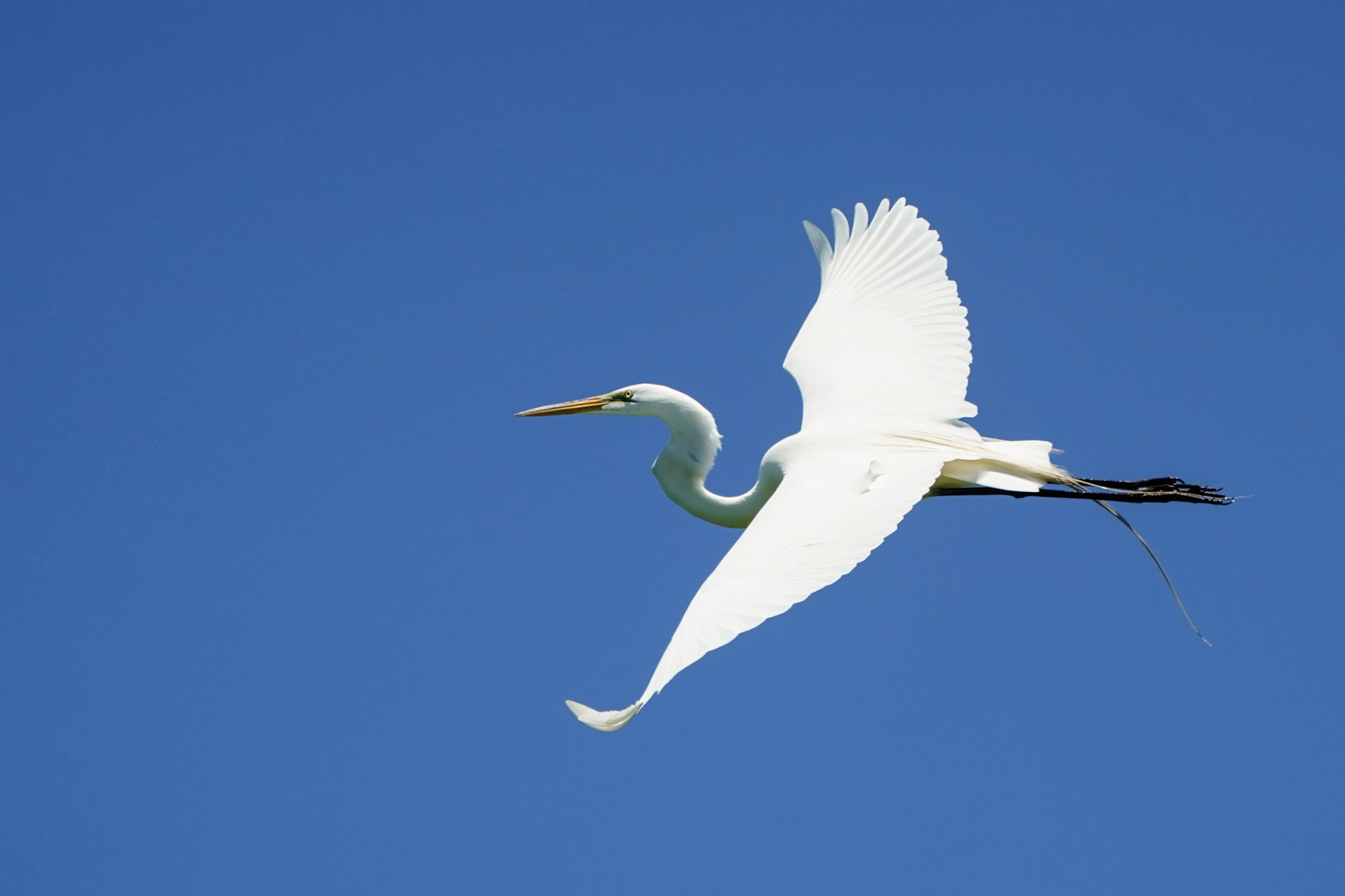Sony A7III, 100-400 GM lens and 1.4X teleconverter
There are a few standard combinations of cameras and lenses that are indicative of the type of photography that you do. Canon 5DSR or Nikon D850 and 50 or 85 f1.2(4) for high res 35mm portraits, and Canon 1DXII or Nikon D5 and 400 f2.8 for professional sports photography can be considered typical (I know there are plenty of others). Depending on what you do and if you get paid for it there are a number of camera combinations that people think of as apropos for that genre. For amateur/enthusiast nature photographers it is often the medium resolution but reasonably fast midrange camera and a 100-400 lens. This combination tends to be the most versatile setup that doesn’t fully break the bank (without going to third party lenses) and Sony took their sweet time providing something that meets the bill.
I started playing with Sony cameras with the A7R and a wide angle lens for landscape work, I had a 70-200 for longer reach but the combination was not yet a good replacement of my canon setup for nature photography. Sony finally announce a 100-400 lens and by that time I was using the A7RII which had good (but not great) tracking autofocus. In single point tracking in good light this system worked well enough, but as you let the system do tracking with larger focus areas it tended to latch onto the background at just the wrong time....especially in backlight situations. The 5fps was adequate but not great and the buffer was rather sucky. Still this was a good combination to take out for higher resolution shots as I had my Canon 1DIV workhorse still at that time for the fast action.
Osprey shot from a kayak in Sparkleberry swamp on Lake Marion. 560mm at f/8, 1/2500s, and ISO 800 wide area continuous focus.
I got a good deal on a Canon 5DS and decided to retire my 1DIV but that left me with a bit of a hole for getting any burst shots and now I had no cameras with a buffer that didn’t leave me waiting in certain conditions.
At that time I didn’t want to spend the money on a 1D upgrade as 20 MPixels felt limiting for the amount of cropping I often have to do and I didn’t want that big of a camera anymore. The Canon 5DIV was compelling but still expensive and the buffer was as lacking as the 5DIII. Sony came out with the A9 that sounded great in terms of features but the price tag was pretty massive for a camera that I wasn’t yet sure if it would be all it was saying it was (turns out it was but I didn’t end up needing to spend the money). This is when the A7III came out with 10 frames per second, a reasonable 24 MPixel sensor with excellent autofocus and a buffer that can hold for the types of burst that I tend to do...quick small bursts but often many of those as things move by. Oh, and the price was way better than expected for all that came in that package.
Wood ducks shot in crappy light against what used to be a challenging background. 560mm at f/8, 1/640s and ISO 6400, wide continuous focus.
I do a lot of bird photography as well as animals from bear and elk to alligators. I don’t tend to have the issues that sport photographers have with picking out a single subject with a ball and tracking them through a sea of other similar subjects. Usually I’m looking at a single subject or if a group I’m trying to get the closest one or expanding to get as many in focus as I can. From that perspective the A7III wide focus group is amazing picking out and holding onto moving subjects quickly and effectively. I can change to one of the other modes quickly and the joystick is excellent for quickly moving the points around ( I have tried the touch screen but so far I have found that I accidentally change the point with my face or finger without knowing it and often have to move it again as I bring the camera back to my eye.
Black bear in the cherry trees. Cades Cove, Smoky Mountains National Park. 560mm at f/8, 1/320s, and ISO 3200.
What do I like:
New battery - this was definitely one of the biggest issues with the previous versions of Sony mirrorless cameras and the fix was not just noticeable, it was pretty fantastic for a battery that is still fairly small. This is really the only major thing that annoys me about the A7RII and the four batteries that I have to carry around with it.
Joystick - accessing focusing points was painful in previous cameras, this is still the easiest way to do so especially when you have gloves on in the cold.
Touch screen - pretty useful for tripod work but so far I have found I accidentally touch it when I don’t want to when my eye is up to the eyepiece….I have found this with all touchscreens from all companies so far.
Weight - definitely lighter than the canon setup that I have and every pound counts when you are backpacking into a site.
Autofocus - This is likely the best feature of any of the latest Sony cameras, not only is the autofocus fast and the tracking excellent the feedback in the viewfinder makes it so easy to really tell that you are in focus and that the tracking is keeping up. I can’t wait to see the updates that are supposed to improve on what is already pretty great.
Teleconverter - very sharp, all focus modes work even at f/8, I wish others would provide theirs with a nice little hard case like this.
Tripod mount - easily removable foot but once on it is not going to accidentally fall off.
Programmable buttons - on both camera and lens. Between this and the function menu I rarely need to go into the menus when shooting.
On the Lens - Copied canon’s new 100-400 on the smooth/tight lock and the polarizer window on the lens shade. Also copied them on the image quality….excellent on both.
Low light capabilities - I have been able to shoot in light conditions with this setup that I have never been able to before.
Dual cards - redundancy for both stills and video
Red Morph Screech Owl after dark. 400mm at f/6.3, 1/13s, and ISO 6400. Kudos to the image stabilzer and ability to focus in almost no light.
What would I change:
Viewfinder - works well but I would love to have had higher resolution....I do realize that this was something that they did to reduce cost and differentiate this entry level camera from the more expensive ones.
Silent shooting - this is a great feature to have and works well for birds at rest or animals moving slowly but I would love to see them improve the electronic shutter for action shooting. This will likely come to us in the future as the technology from the A9 makes its way down the line over the next few years.
Touch screen - is ok, works well enough from a tripod for touch focus but Sony really needs to make these cameras so that you can do everything either by screen or by buttons/wheels....having multiple ways to accomplish things is very useful for tools that are used in so many different ways.
Vertical grip - I have the vertical grip and extra battery for this setup but have found that I don’t really use it that often. I am very used to the feel of the Sony bodies now and they fit my hand. From a power point of view, I just carry one extra battery in my pocket and that is usually enough for a couple days of shooting for me.
Great Egret in flight. 400mm at f/5.6, 1/2500s, ISO 400
Final Thoughts
I’m really looking forward to the updates to the firmware coming this spring to improve ‘real time’ tracking and especially to see how the animal eye focus tracking works. I’ll very likely write something on that as soon as it is available.
Although I would still love to have the A9 in place of this camera I am very happy with the extra money for a couple more trips as the A7III has almost everything I need. Same goes for the A7RIII, if I didn’t have version 2 already I would likely have gone for it but it is really nice to have both a high resolution and a fast camera, both available at the same time. I’ll always be wishing for a little faster and a little more detail but really there is little to complain about with this setup. If you are looking for a mid range nature setup this is a good step up from the typical apsc camera and 70-300 or even the 150-600 that many people start to get into nature photography. It definitely is competitive with anything Canon and Nikon have in the price range ( approximately $2000 or so for the camera and $2400 USD for the lens)






